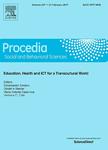版权所有:内蒙古大学图书馆 技术提供:维普资讯• 智图
内蒙古自治区呼和浩特市赛罕区大学西街235号 邮编: 010021

作者机构:Graduate School of Systems and Information Engineering University of Tsukuba 1-1-1 Tennodai Tsukuba Japan
出 版 物:《Procedia - Social and Behavioral Sciences》
年 卷 期:2011年第21卷
页 面:230-239页
主 题:Areal interpolation Spatial dependence Spatial statistics EM-algorithm Pycnophylactic property
摘 要:Differences in spatial units among spatial data often complicate analyses. Spatial unit convergence, called areal interpolation, is often applied to address this problem. Of the many proposed areal interpolation methods, few consider spatial autocorrelation, which is the general property of spatial data. In this paper, by employing a spatial process model, a new areal interpolation method that considers spatial autocorrelation is presented. First, we briefly survey previous areal interpolation techniques and demonstrate that the stochastic method is superior to the deterministic method in archiving accurate interpolations. Next, after a discussion on the spatial process model, a new areal interpolation method is suggested. In this method, both spatial autocorrelation and the volume preserving property, a property that should be considered in areal interpolation, are considered using a combination of a linear regression based areal interpolation method, and the spatial process model. Finally, a case study on the areal interpolation of a population is provided to demonstrate that the suggested method succeeds in improving the predictive accuracy. This case study indicates that the consideration of spatial autocorrelation is important for accurate areal interpolation.